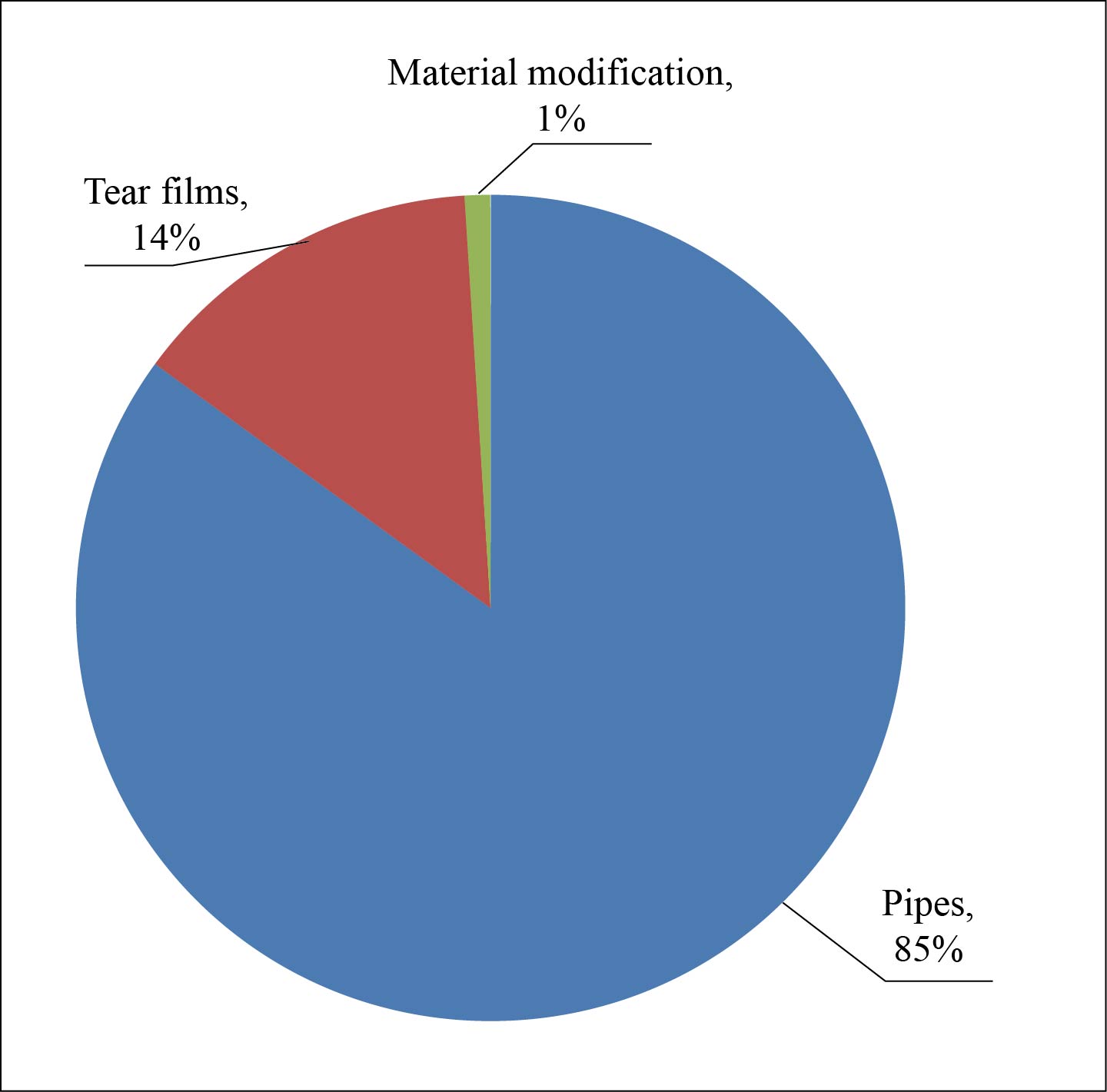By Xiao Shujun, China National Chemical Information Center
Extensive application
Application sectors of homopolymerized polybutene-1 with different isotactic degrees have wide differences. Polybutene-1 with the most extensive application in market today is homopolymerized polybutene-1 with a high isotactic degree of over 96%. The chemical resistance, the aging resistance and the electric insulation of polybutene-1 are all similar to polypropylene. The outstanding advantage of polybutene-1 is that its creep resistance, environmental stress cracking resistance and impact resistance are excellent and all superior to polyethylene. The most important application sector of polybutene-1 is the manufacturing of pipes such as water supply pipes, hot water pipes, industrial pipes and building pipes.
Owing to its excellent heat resistance, transparency and non-toxicity, it can be extensively used in medical apparatuses such as syringes, tee valves, blood diverting tubes and UV blood analysis tubes. It can also be used in medicine/food packaging such as milk containers, table settings, food packaging films and transparent packaging materials to replace thermosetting resins and optical plastics. It can also be used to make release paper and heat-resistant lenses. It also has extensive applications in aviation and spaceflight.
Globally, the consumption of polybutene-1 in the pipe sector accounts for 60% of the total (See Figure 1 for detail). Another important consumption sector is the film sector and the consumption accounts for 30% of the total.

Figure 1 Downstream consumption of polybutene-1 in the world, 2017
The consumption structure of polybutene-1 is slightly different from region to region. In North America major applications of polybutene-1 include plastic modification and tear films. In Asia the manufacturing of pipes is the most important downstream sector of polybutene-1. In Europe the market share of polybutene-1 pipes is estimated to be over 50% and in some countries such as Switzerland can even reach as high as 80%. Table 1 shows the consumption of polybutene-1 in different countries/regions in 2017.
Table 1 Consumption of polybutene-1 in different countries/regions in 2017
| Country/region | Consumption (t) | Proportion (%) |
| Europe | 23 300 | 37.3 |
| China | 12 400 | 19.8 |
| South Asia | 9 400 | 15 |
| North America | 7 000 | 11.2 |
| Middle East | 3 700 | 5.9 |
| Others | 6 700 | 10.7 |
| Total | 62 500 | 100 |
Commercial production restricted by technologies and raw materials
Polybutene-1 achieved commercial production in as early as 1964, but due to the difficult implementation of polymerization technologies and the limited source of raw materials its large-scale commercial production has been restricted. For long years only Lyondell Basell of Netherlands could produce polybutene-1 in the world.
The capacity of polybutene-1 in Mitsui Chemicals is around 17 kt/a. Polybutene-1 supplied by Mitsui Chemicals is material with a natural color and special color master batch needs to be added for use. Polyburene-1 produced in Lyondell Basell, however, is compound with a color already mixed.
In 2009 Ylem Technology of Korea also completed and put on stream an 8 kt/a polybutene-1 production line with independent intellectual property. The company was acquired by Aikang of Korea in the same year.
The total capacity of polybutene-1 in the above-mentioned 3 companies is around 92 kt/a. As the downstream demand and the upstream supply are stable in recent years, market fluctuations are small and both the supply and the demand have been kept stable in past 5 years.
There is only one polybutene-1 producer in China today. It is Dongfang Hongye Chemical Co., Ltd. and the capacity is 50 kt/a.
Gradual demand increase and low self-sufficiency rate in China
The demand of polybutene-1 in China is making a year-on-year increase. No matched production scale has however been formed by now.
In 2008 Polymer Science and Engineering School of Qingdao University of Science & Technology and Shouguang Tianjian Technology Co., Ltd. jointly made the trial commercial production of polybutene-1. Then they tackled technical problems in collaboration with Dongfang Hongye Chemical Co., Ltd. The first polybutene-1 production line in China was constructed in Shouguang of Shandong in December 2013. The capacity was 50 kt/a and the product was mainly used in building pipes and radiant floor heating pipes.
In 2010 Heilongjiang Qihua Group Co., Ltd. conducted renovation to its 20 kt/a small bulk polypropylene unit, made the trial production of polybutene-1 and achieved satisfactory results. Compared with imports, however, product properties are yet to be further improved.
A polybutene-1 unit in Shandong Ruida Chemical Co., Ltd. located in Tengzhou of Shandong is being constructed today. The capacity of the unit is 60 kt/a. It is a combined unit with two 30 kt/a lines. Construction is completed and debugging is under way. After the unit is put on stream, the total capacity of polybutene-1 in China will make a drastic upgrading.
The consumption structure of polybutene-1 in China is a little different from the international community. The consumption proportion in pipes is as high as 85%. Figure 2 shows the consumption structure of polybutene-1 in China in 2017.

Figure 2 Consumption structure of polybutene-1 in China, 2017
The total market demand of polybutene-1 pipes in China has been kept stable in recent years. Most of polybutene-1 used in China comes from import. Despite new polybutene-1 units already put up in China, product quality and product stability need to be further improved. The consumption of polybutene-1 in China is 10-15 kt a year in past 5 years. The supply amount is the most important restricting factor. The consumption is still mainly satisfied by imports today. The market share held by Lyondell Basell and Mitsui Chemicals is over 60%.